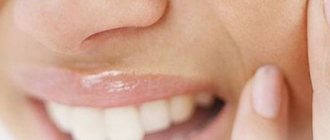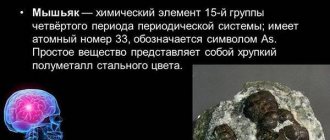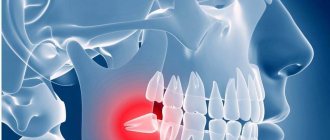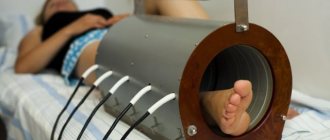2624
The beneficial properties of garlic were known to ancient healers. With its help they were saved from various diseases, restored youth to the skin and hair, and eliminated toothache.
Today, there are also many people who prefer garlic to tablets for toothache and at the same time consider it a more effective remedy.
What recipes are used?
According to some healers, garlic is a universal remedy that helps with any type of pain that occurs in the mouth.
To relieve it, traditional medicine offers a wide variety of recipes that provide for both external use of garlic and internal use.
If you systematize all the recipes, you can get several groups of them , differing in the direction of impact:
- applying a compress directly to the tooth;
- rinsing with garlic-based solutions;
- ingestion of tincture with garlic;
- compresses on the wrists.
According to reviews, such methods can relieve even severe pain.
Does it have an analgesic effect?
The analgesic effect of garlic is explained by its pronounced bactericidal and bacteriostatic properties. This plant is capable of destroying microbes in a short period of time and stopping the reproduction and growth of bacteria.
Due to the fact that the aggressive effect of pathogenic microorganisms on the inflamed tissue is temporarily reduced, the symptoms of intoxication and the intensity of pain are reduced.
In addition, if you combine garlic with salt, you can relieve swelling and prevent purulent inflammation of the tissues surrounding the infected tooth.
The main feature of this remedy is that the therapeutic effect is achieved not only through a reflex effect on the mucous membrane and dental tissues, but also due to the deep penetration of active substances into them.
They are able to penetrate through the skin into the systemic bloodstream.
The bactericidal and fungicidal properties of garlic are due to the unique substance allicin, which is not present in this plant in free form. It is formed only when the pulp is deformed.
During this process, damaged cell elements begin to interact with each other, forming allicin as a result of this reaction. It should be borne in mind that the less time has passed since the garlic pulp is damaged, the more active substance it contains.
But even the volume provided by freshly mashed garlic does not provide a pronounced therapeutic effect , which is observed when using targeted medications.
In addition, garlic has a pronounced irritating effect, which, when used for a short time, can improve blood circulation in soft tissues, and when applied to the mucous membrane for a long time, can lead to burns.
Review of traditional methods
Traditional medicine provides many recipes using garlic to relieve toothache.
Where exactly it is recommended to apply this product and how long to keep it on, we will tell you below.
We will tell you what to do when your wisdom tooth hurts badly in the next article.
In a separate article we will talk about whether it is possible to treat teeth with anesthesia during lactation.
Using the link https://www.vash-dentist.ru/lechenie/zubyi/plombyi/chto-delat-esli-posle-bolit.html we will discuss how much the tooth hurts after filling.
Tooth overlay
One of the well-known ways to relieve toothache is to apply a compress with garlic directly to the affected tooth.
To prepare it you need:
- Take one clove of garlic and crush it using a knife or garlic press.
- The resulting pulp is placed in the tooth cavity, previously cleaned with a toothbrush.
- Then, cover the mass with a cotton swab so as not to cause a burn to the mucous membrane.
Some sources suggest adding black pepper or salt. Pepper helps increase tissue trophism, and salt relieves swelling.
Some people advise making compresses differently: cut off a small part of the slice and, placing it on top of the tooth, press it firmly with your teeth. In this case, juice is released, which flows into the carious cavity of the tooth.
As a result of all the manipulations described above, a person should feel a slow decrease in pain.
But in practice, this procedure looks a little different. After applying the pulp to the tooth, the intensity of the pain only intensifies and they acquire a shooting or tugging character .
In addition, a strong burning sensation appears in the area of the affected tooth.
This reaction most often occurs when the carious cavity has reached the pulp or is located on the border with it. The pulp is an unprotected bundle of blood vessels and nerves.
Any exposure to irritating factors leads to a painful response, and garlic is no exception in this case, as it contains a large number of chemical irritants, especially if it is combined with salt or pepper.
Such an impact will lead to burns of the pulp and death of the neurovascular bundle , which can provoke purulent inflammation.
The only way that can help in this situation is to rinse the cavity with warm water.
Garlic can really help if the cavity is small, but even then it is better to use gargles made with garlic .
Garlic tincture
One of the common recipes for toothache using garlic is a special tincture prepared on its basis.
Its preparation does not require any experience or complex ingredients.:
- You need to take 100 grams of chopped garlic and 0.5 liters of vodka.
- The garlic is poured with vodka immediately after grinding, then the vessel with the liquid is tightly closed and put in a cool place where sunlight does not reach.
- The tincture is left for two weeks, shaking regularly.
After this period, the mixture is filtered using gauze and left to settle for another couple of days. The finished tincture is used for toothache or periodontal inflammation, diluting it with water in a 1:1 ratio.
Some people prefer to take this remedy internally.
The latter option is unlikely to help with toothache. The liquid, at a minimum, will provoke vasodilation, and at a maximum will lead to irritation of the mucous membrane from the combination of two aggressive components: ethanol and garlic.
The first option is indeed acceptable for pain, but only if it is caused by inflammation of the gum tissue. When used correctly, garlic tincture can relieve symptoms of inflammation due to the complex action of the main substances.
Phytoncides destroy bacteria, and ethanol has an additional aseptic effect.
But if you consider in detail the recipe for preparing the tincture, you should pay special attention to the timing of this process . The liquid must stand for at least 2 weeks.
Inflammation of dental or periodontal tissue, manifested by severe pain, will take an advanced form during this period and will be accompanied by complications. The best option in this case is not to use the tincture, but to visit the dentist.
Compress on the wrist
The simplest and oldest way to relieve pain with garlic is to apply a compress to the wrist or apply it with the cut side to the skin.
This recipe looks like this :
- One clove is thoroughly crushed until a small amount of juice is released.
- The resulting paste is applied to the wrist of the hand opposite the side where the pain occurred. If a tooth hurts on the left side, then you need to apply the product to the right. The paste is applied to the wrist area, where the pulse is clearly palpable.
- The product is covered with a piece of gauze and bandaged tightly to the hand.
The main advantage of this technique is that you do not need to ingest anything, which is very important for stomach diseases. Also, this method does not involve direct impact on the diseased tooth.
Why the analgesic effect appears with this method has three explanations::
- Some explain this by influencing reflex points , which are responsible for transmitting pain impulses to parts of the brain.
The substances that make up garlic can have an irritating effect even on biological points. According to its characteristics, this method is similar to the method of acupuncture and acupuncture. Despite the general assertion about the effectiveness of such an effect, there is no scientific evidence for this theory. - The simplest explanation is that the toothache does not decrease, the person is simply distracted from it due to a strong burning sensation in the wrist area, which is affected by garlic. At the moment, this explanation can be considered the most reasonable.
- The doctors tried to explain pain relief using such a simple method. In their opinion, phytoncides penetrate through the skin into the circulatory system. Placement on the opposite side is due to the property of the vessels to circulate in a circle.
Thus, they will quickly deliver the phytoncides to the aching tooth, where they will provide antibacterial effect and relieve excessive pressure from the dental pulp. This leads to a decrease in combat sensations.This justification was also not confirmed.
Read how to rinse your mouth for pain after tooth extraction in the next review.
In a new publication, we will figure out whether it is possible to treat teeth for pregnant women without anesthesia.
Here https://www.vash-dentist.ru/lechenie/zubyi/plombyi/chistka-kanalov.html we will find out how long a tooth usually hurts after cleaning the canals.
In addition to the fact that this method has no scientific confirmation, it also leaves a persistent smell of garlic that does not wash off even when soaping your hands.
What methods are most effective for relieving toothache at home, watch the video:
Wisdom teeth: causes of pain and first aid
It is not for nothing that wisdom teeth are considered the most problematic elements in the dentition. And this despite the fact that their eruption usually begins no earlier than 16-27 years.
Most people experience that their wisdom teeth start to hurt. This condition can be either normal or a sign that you need medical attention. It all depends, first of all, on the cause that caused this symptom.
Why does wisdom tooth hurt?
The etiology of pain in a tooth can be different. Most often there are several reasons:
- Problems with teething . It’s rare that wisdom teeth grow without problems. As a rule, most people are concerned about the pain that accompanies this process. They can be both intense and quite moderate. The most common cause of pain is inflammation of the hood. The soft tissues that cover the tooth are very susceptible to inflammation. In addition, pathogenic bacteria can accumulate under them. Often, this situation can lead to the formation of a follicular cyst near the wisdom tooth. This, in turn, causes an abscess and other complications. "Eights" are called rudimentary. This means that over time they will disappear, because the jaw of modern people is gradually becoming smaller. Therefore, it is not surprising that sometimes a wisdom tooth begins to erupt when there is practically no room for it in the dentition. In this case, it may grow in the wrong direction, cut into the cheek or put pressure on an adjacent tooth. All these pathologies are also accompanied by severe pain and require consultation with a doctor.
- Caries . Wisdom teeth not only create problems during eruption, but are also very susceptible to tooth decay. Due to their location in the oral cavity, they are difficult to clean and often leave bacteria and food debris on the surface. This leads to an infectious process and the development of caries. Moreover, the lesion often affects the adjacent tooth. If caries has already penetrated quite deeply into the tissue, it can cause pain. Therefore, if you notice black spots on the surface of your wisdom tooth, be sure to consult a doctor before the disease leads to complications
- Pulpitis . If the pain in a wisdom tooth is paroxysmal, then most likely it is pulpitis. In this case, as a rule, there is already advanced caries, complicated by a bacterial process. Pulpitis is usually characterized by acute pain, but in chronic cases it can be aching
- Periodontitis . This disease affects the soft tissue around the tooth. The pain can be quite severe or mild. Often, discomfort occurs when eating hot or cold food, as well as from mechanical impact on the tooth. Pain with such a diagnosis may also be accompanied by swelling or a slight increase in body temperature
Write a comment
Taisiya
October 15, 2016 at 4:06 am
I know several ways to relieve toothache using traditional medicine, although this is the first time I’ve heard about the possibility of using garlic. A decoction of plantain root collected in the fall or calendula flowers can also help. Everything is prepared separately. You should rinse your mouth with prepared liquids if pain occurs. But this method of pain relief does not mean curing a diseased tooth. Still, as soon as possible, hurry up and visit the dentist.
Natali
October 16, 2016 at 3:26 am
Treating teeth with garlic these days is the height of fear of dentists. This is not just the old-fashioned way, it’s the great-grandfather’s way! To prevent such nonsense from entering your head, you need to go to the dentist every six months for a 15-minute consultation and examination, and have a professional cleaning done once a year or once a year and a half. And treat everything on time, and not delay until a piece of chicken gets stuck in your holes. And you will be happy. Nowadays dentistry is completely painless!
Marina
October 18, 2016 at 3:32 am
I used this method with garlic for a very long time, because the pain was simply unbearable, and it was in the evening, there was no way to go to the pharmacy. I crushed the garlic and applied it to the sore spot, at first it hurt, but after a while the pain went away, apparently the garlic just burned the sore spot. But now I definitely wouldn’t do that; after all, there are modern means for this that need to be kept in stock.
Vasil
October 19, 2016 at 11:59 am
I have loved garlic since childhood, and have repeatedly treated all sorts of illnesses with it. As for the teeth itself, I also have experience. It says here that crushed garlic needs to be covered with cotton wool on top, but I didn’t think of that, I endured it with all my might. As a result, your teeth don’t hurt, but the skin in your mouth peels off. I tried using lotions - the effect was not the same, the gruel helps better.
Natasha
June 12, 2022 at 11:33 am
At night I suddenly got a toothache. The pain was severe, and there were no pills in the medicine cabinet. Mom advised me to try applying garlic paste to my pulse. Personally, this method did not bring me much relief; the pain subsided slightly and returned again. I waited until morning and went to the dentist. It may help with mild pain, or maybe you should have applied garlic to the tooth itself.
Myths about teeth
Myths about teeth brushing and whitening
1. Teeth can be whitened with a special toothpaste. This is wrong . Bleaching pastes containing abrasive materials can only remove staining from nicotine or food. Such toothpastes will not be able to make teeth whiter than they were intended by nature. Real teeth whitening is done only in dental clinics , using hydrogen peroxide or carbamide peroxide compounds.
2. To make your teeth whiter, you need to brush them with baking soda. In fact, soda has a very high abrasiveness, much higher than permissible. Therefore, brushing your teeth with soda will cause it to scratch and eventually remove the enamel of your teeth . Soda is contraindicated for any type of periodontitis.
3. Brushing your teeth is generally harmful, as it wears away the enamel. If you do not brush your teeth , soft plaque forms on them , which first contributes to the development of caries , and then the formation of tartar.
4. Teeth need to be brushed only 2 times a day. It's minimum. The amount of brushing depends on the nature of the food, the amount of plaque and the general condition of the body.
5. Brushing your teeth should be done after breakfast. Yes, you really need to brush your teeth after eating. But in the morning it is better to brush your teeth before eating , immediately after waking up - this prevents the bacteria that formed in the oral cavity overnight from developing and prevents bacteria from entering the stomach during meals.
Myths about toothache
6. If you have a toothache, apply cotton wool with alcohol or crushed aspirin to the tooth. It is very dangerous. This will not make a sick tooth feel any better, but if held for a long time, it will burn the mouth.
7. For toothache, you need to apply garlic to your wrist. This is how a certain group of sectarians were treated. Their faith in this method helped them. You can try it too.
8. If your teeth don’t hurt, then you don’t need to go to the dentist. As a rule, diseases of the oral cavity initially occur painlessly . In addition, in the early stages the disease is much easier to cure. Therefore, you must visit the dentist twice a year.
9. Any visit to the dentist is scary and painful. This is wrong. Dentistry today means modern treatment methods, clinics are equipped with silent devices and a variety of painkillers.
Myths about bite correction and braces
10. You can correct your bite at any age. This is only true if one or two teeth need to be corrected . If the bite is disturbed due to the characteristics of the maxillofacial apparatus, then each specific case should be discussed with an orthodontist.
11. The bite should be corrected after replacing all baby teeth with molars. It is better to visit an orthodontist when the child is three years old. If a child sucks a finger or pacifier for a long time, it is better to visit an orthodontist before the age of three. This will prevent the development of malocclusions and premature removal of baby teeth.
12. Correcting a child’s bite is expensive. There is some truth. The services of an orthodontist are not cheap. But if we take into account that an incorrect bite leads to a violation of the chewing function, therefore, disorders of the gastrointestinal tract, diseases of the teeth and gums, then by correcting an incorrect bite as early as possible, it will be possible to get by with small losses of money.
13. It takes a long time to get used to braces. This is wrong. Getting used to it lasts one to two weeks. In the first days after installation, pressure is felt on the teeth. Subsequently, braces do not interfere even when playing wind instruments.
14. Braces damage tooth enamel. Between the bracket and the tooth there is a special material that releases fluoride and strengthens the enamel. Tooth enamel can be worsened by insufficient hygiene when wearing braces or eating foods prohibited by the orthodontist. It is necessary to follow all the doctor’s recommendations and take care of your teeth more carefully than before installing braces.
15. Wearing braces is not attractive. It is much uglier to have uneven teeth. And you can choose braces to suit every taste - silver, sapphire, ceramic, plastic, lingual.
Myths about prosthetics and implantation
16. When installing a crown on a tooth, the nerve must be removed. Not anymore. Modern technologies in dentistry make it possible to treat a tooth and prepare it for prosthetics without resorting to nerve removal. When processing a tooth, a minimal amount of its tissue is removed, and after grinding the tooth is coated with a special agent that reduces its sensitivity.
17. Gold never causes allergies in the oral cavity. It is a myth. Everything is very individual . Some people may experience inflammation where gold crowns touch the oral mucosa.
18. It is not at all necessary to place an implant if there is no tooth. On the contrary, it is very necessary. When a tooth is missing, the bone tissue of the jaw deteriorates , pits and cavities form, the load on the remaining teeth increases, but the quality of chewing suffers, and this is fraught with diseases of the gastrointestinal tract. Well, in the end, a person with a full row of teeth has a more aesthetic appearance.
Myths about tooth extraction
19. It is cheaper to remove a diseased tooth than to treat it. It depends on situation. If there are no direct indications for tooth extraction, it must be preserved and cured. The tooth extraction itself can indeed be much cheaper, but as we have already stated above, there should not be empty spaces in the mouth. But dental implantation will still cost more than treating your own tooth.
20. A diseased tooth must be treated until the last minute and under no circumstances should it be removed. Of course, tooth extraction is far from the best option, but a diseased tooth is a source of infection , which also adversely affects the health of the body. Everything is very individual. There are cases when a seemingly non-viable tooth can be cured, but a seemingly healthy tooth has to be removed.
21. After tooth extraction, the oral cavity must be thoroughly disinfected. This is true, but you must not overdo it so as not to wash the blood clot out of the wound. It helps in better healing. So it’s better not to touch this place for 2-3 days.
Myths about treating children
22. Any dentist, not necessarily a pediatric dentist, can treat a child’s teeth. Treatment methods for children's and adult teeth are different. This is due to the presence of baby teeth in children and the resorption of their roots. And it is the pediatric dentist who is more qualified to possess this information. In addition, the cost of pediatric dentistry is cheaper.
23. It is necessary for the child to be afraid of dentists, then he will take better care of his teeth. There is a chance that the child will brush his teeth well often, but psychological fear of dental treatment will be more of an enemy than a helper . Because you will still have to treat your teeth sooner or later in life. It is better to visit the dentist with your child 2 times a year so that he gets used to the fact that this procedure is not scary, but necessary.
24. There is no need to treat baby teeth; they will fall out anyway. This is a very harmful misconception for children's health. Untreated baby teeth lead to problems with molars. Extracted baby teeth disrupt the bite prematurely.
25. Sweets are bad for your teeth. Not all sweets. Chocolate, for example, contains cocoa beans, which have an antimicrobial effect and protect teeth from caries. But this does not mean that you should not brush your teeth after eating chocolate or consume it in moderation. It is better to drink carbonated drinks through a straw to reduce the contact of the liquid with the enamel of the teeth.
Other myths
26. Traumatic periodontitis can occur only after an injury (bruise, blow).
The most common causes of this disease are not injuries, but, for example, regular pressure on the teeth from the mouthpiece of a smoking pipe or musical instrument. It’s also a good idea to get rid of bad habits - biting threads, pressing on a tooth with a pencil or pen, shelling seeds, etc.
27. Trigeminal neuralgia occurs during a cold. No. Trigeminal neuralgia is viral in nature and manifests itself as herpetic rashes on the skin of the face, although a cold provokes this disease. The first thing to do at the first signs of neuralgia is to get rid of the virus, i.e. if the disease becomes chronic, a post-herpetic pain phenomenon may develop, and it will have to be treated with anticonvulsants.











